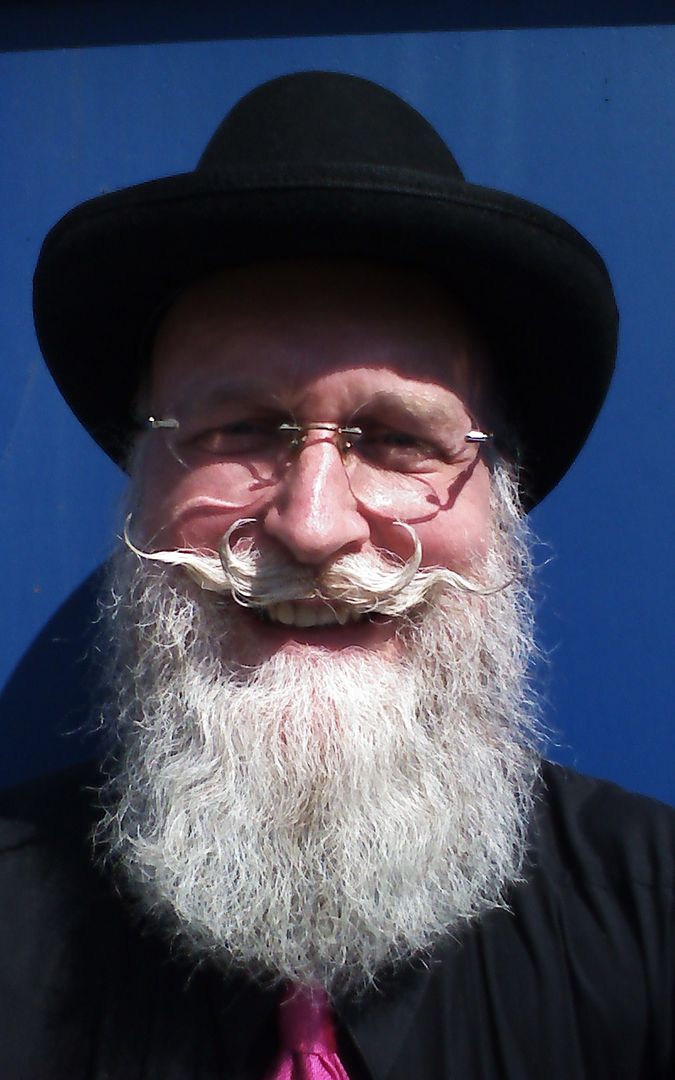

 The Accurate Reloading Forums
The Accurate Reloading Forums  THE ACCURATE RELOADING.COM FORUMS
THE ACCURATE RELOADING.COM FORUMS  Guns, Politics, Gunsmithing & Reloading
Guns, Politics, Gunsmithing & Reloading  Gunsmithing
Gunsmithing  Classy bluing - 'fire' vs. nitre
Classy bluing - 'fire' vs. nitreGo  | New  | Find  | Notify  | Tools  | Reply  |  |
| one of us |
Is there any difference between these two? I have many times noticed the nice royal blue you get when you heat steel to the right temp - I have found it is fairly durable too, requiring a bit of rubbing to remove. I have also talked with another member via e-mail, re: this finish. I would have no qualms about using this technique to get the original Mauser coloring on actions screws and pins, and the ejector box housing. In fact, this is how I plan to treat the various screws and the ejector box on my custom Mauser. BUT, what about springs like the ejector spring, and the extractor? Can you blue / color them like this without destroying temper? How were they originally finished without removing the temper? I'm talking about the coloring on KurtC's beautiful restored Czech, in case you are wondering -- check (czech?) out the screws, extractor, and ejector assembly: http://www.accuratereloading.com/ubbthreads/showflat.php?Cat=&Number=569919&page=1&view=collapsed&sb=5&o=21&fpart=1 Nice show Kurt! Help anyone? Todd | ||
|
one of us |
I believe the color of those springs often was the result of heating them to temper, and the color was used as a visual guideline to reaching the correct temperature for the tempering. | |||
|
one of us |
There is a big difference. Though I can't tell you why. They are both heat induced colors, but fire bluing rubs right off while nitre bluing does not. The coloring does not hurt the heat treat. In fact, it is probably very close to the correct tempering temperature for high carbon spring steel. | |||
|
one of us |
I've heard that as well, but I don't know for certain. Nitre bluing temp is 500-550 degrees F. | |||
|
one of us |
I thought the temperature of a boiling "hot salt" (sodium nitrate and sodium hydroxide) bluing bath was in the neighborhood of 300�F. Are you talking about using molten saltpeter (nitre)? | |||
|
one of us |
Nitre blue isn't a caustic hot blue. It is potassium nitrate and sodium hydroxide heated to a liquid state to a temperature of about 600 degrees. The parts are immersed until the desired color is obtained. | |||
|
one of us |
Ah! I'd read of using that as a spring tempering method years ago. Never occurred to me that it'd blue the steel, but I guess it would. | |||
|
one of us |
Ricochet I am adding another post to this thread because I noticed you were one post ahead of me. Ha! | |||
|
| one of us |
Todd, I just received two 98/22's from J&G that I plan to restore and have been contemplating the same thing. My gunsmithing books seem to indicate that you can polish the part and heat to around 650 degrees F without damaging temper. This should give a good dark blue color. I have a Swedish Mauser and it has a beautiful bolt stop spring which is a mottled straw and blue color. The blue on that custom Mauser is a little too bright for my tastes. I'm going to practice on some old sight leaf springs with a torch and molten lead and see what happens. A question: Do you know exactly what the correct finish is for the bands and springs of the 98/22? I've seen several and the photo in Olson's book and they don't jive. All of the current imports I have seen show no evidence of bluing on the upper band but the photo in Olson's book show it deeply blued. The lower bands appear to have been blued and I'm not sure about the band springs. One of my rifles has the bolt stop blued and the other "in-the-white". The recoil bolts appear to be white. Any help would be appreciated. Bob | |||
|
| one of us |
Thanks for all the replies. I may play with it a bit, as I have a large stash of not-so-pretty old parts, including some ejector housings / springs, which I don't care about ruining. I was also thinking that heating to the 'blue' temp on a spring would actually temper it, not anneal it. But I am neither a metallurgist or a metalworker, only a hobbyist. SDH, I will contact you with some further questions. Bobster, here is my understanding of the 98/22 original finish (drawing from the experience of a half dozen or so of them): band springs - in the white; bayonet lug - in the white; upper and lower bands - blued; crossbolt - blued; bolt takedown disc in stock - in the white; rear sight ladder - in the white; buttplate - who knows? several WERE blued on the underside; ejector box / spring, rear sight base and slide, pins and screws, bolt sleeve lock - nitre blued (all other bolt parts, and the follower - in the white). Fine rifles, every bit the equal of the Persian 98/29 when cleaned up. Todd | |||
|
| Powered by Social Strata |
| Please Wait. Your request is being processed... |
|
 The Accurate Reloading Forums
The Accurate Reloading Forums  THE ACCURATE RELOADING.COM FORUMS
THE ACCURATE RELOADING.COM FORUMS  Guns, Politics, Gunsmithing & Reloading
Guns, Politics, Gunsmithing & Reloading  Gunsmithing
Gunsmithing  Classy bluing - 'fire' vs. nitre
Classy bluing - 'fire' vs. nitre

Visit our on-line store for AR Memorabilia

